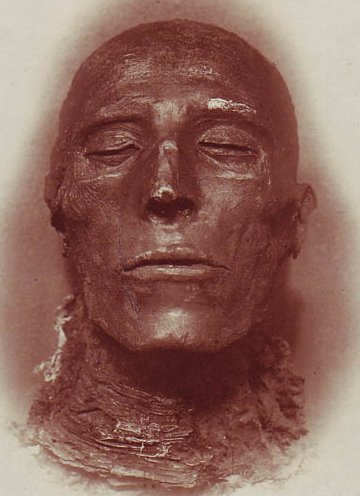Wednesday, May 28, 2014
Blogging Sapper’s Bulldog Drummond, Part One
Bulldog Drummond is a peculiar case. The reputation of the original novels is more maligned than even Sax Rohmer’s Yellow Peril thrillers. To be sure, “Sapper” (the pseudonym of author H. C. McNeile) expressed views that stand out as offensive even among the common colonial prejudices of Edwardian England. The reason for this is easily understood. The author’s nationalistic fervor was predicated on the belief that the only good nation was Britain and every other nationality was inferior to varying degrees.
McNeile was a “True Blue” Brit in every way. A decorated veteran of the Great War, Sapper and his characters adore England and are intolerant of everyone else. Americans are castigated for their crudeness, the French are pompous, and Germans are a vile and irredeemable people. More bigoted views will follow, but that is the extent in the first quarter of the first book in the series.
Having addressed the bad, what is it that makes the books still worth reading nearly a century later? Are they simply a document of more repressive times or do they offer value that makes one willing to overlook the reliance upon stereotypes and casual slurs? I would argue that anyone interested in the development of the thriller and pulp fiction should be exposed to at least the first four books in the long-running series. There is much that is light and entertaining in Sapper’s fiction to the extent that they often read like drawing room comedies until thriller aspects interrupt the humor.
TO CONTINUE READING THIS ARTICLE, PLEASE VISIT THE BLACK GATE ON FRIDAY.
Labels:
Bulldog Drummond,
detective,
pulp fiction,
Sapper,
thriller
Tuesday, May 20, 2014
Hardboiled Pulp: More Than Just a Man’s World
The world of hardboiled pulp is certainly male-dominated, but there have been female authors who have given the masters of the sub-genre a run for their money. Leigh Brackett is certainly the best known female hardboiled writer if only for her screenplay adaptation of Raymond Chandler’s The Big Sleep (1945) for director Howard Hawks' acclaimed film featuring Humphrey Bogart as Philip Marlowe. Brackett also adapted Chandler’s The Long Goodbye (1973) for director Robert Altman's deconstruction of the genre with Elliott Gould as Marlowe. Less well-remembered is the hardboiled novel that won Brackett the chance to first adapt Chandler, No Good from a Corpse (1944).
From the outset, it is clear this is Chandler territory. Brackett’s tough guy private eye hero Ed Clive (named for Brackett’s husband and fellow pulp author, Edmond Hamilton) is very much in the Marlowe tradition and the Los Angeles setting only enhances the authentic feel. More than the trappings, it is the fact that Brackett writes convincingly as a man (particularly in her observations of women as objects of lust who are never to be entirely trusted) that is the most startling. One understands Howard Hawks’ surprise when he hired Brackett as a screenwriter on the strength of this book and found out she was a woman. Murder, blackmail, sultry singers, and beatings and shootings aplenty make No Good from a Corpse an unsung classic of pulp detective fiction.
TO CONTINUE READING THIS ARTICLE, PLEASE VISIT THE BLACK GATE ON FRIDAY.
Labels:
detective,
Dolores Hitchens,
Ed Clive,
hardboiled,
Jim Sader,
Leigh Brackett,
pulp fiction
Thursday, May 15, 2014
The Resurrection of Dr. Mabuse, Part Two
Less than six months ago, I reviewed indie wunderkind Ansel Faraj’s 21st Century update of Dr. Mabuse. The Rondo-nominated film garnered more attention from genre fans for Faraj’s stunt casting of veterans of the 1960s Gothic soap opera, Dark Shadows than it did for his faithful recreation of Expressionism in the digital age of indie filmmaking.
I won’t claim Faraj is the equal of Fritz Lang or that his Hollinsworth Productions offers the re-sources of UFA at its peak, but this is a young man who impresses in spite of the limitations of budget and time. There is a dreamlike quality to his work which is helped rather than hindered by the Spartan production values. One wonders just what he would be capable of rendering given studio backing.
Faraj’s latest production, Etiopomar is the second half of his Doctor Mabuse reboot and deftly blends elements of Norbert Jacques’ original novel that Fritz Lang and his screenwriter wife Thea Von Harbou jettisoned for their 5 hour two-part adaptation of the book in 1922 while incorporating characters from Lang and Von Harbou’s Metropolis (1927). When one considers Lang’s silent masterpieces, the visionary Metropolis easily supersedes his Mabuse pictures. Metropolis is a stunning sci-fi epic that is still influential nearly 90 years on.
TO CONTINUE READING THIS ARTICLE, PLEASE VISIT THE BLACK GATE.
Subscribe to:
Comments (Atom)


.jpg)